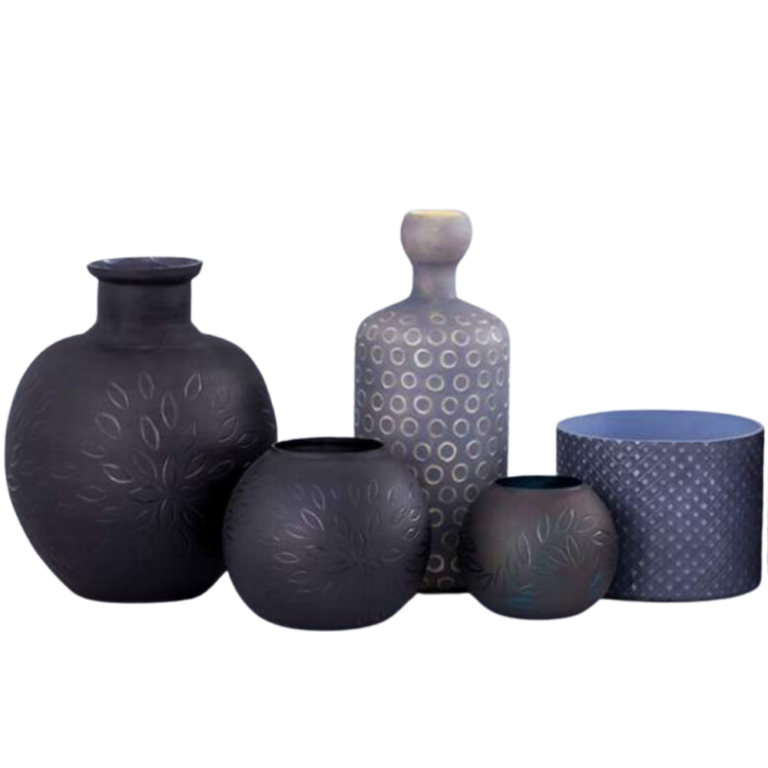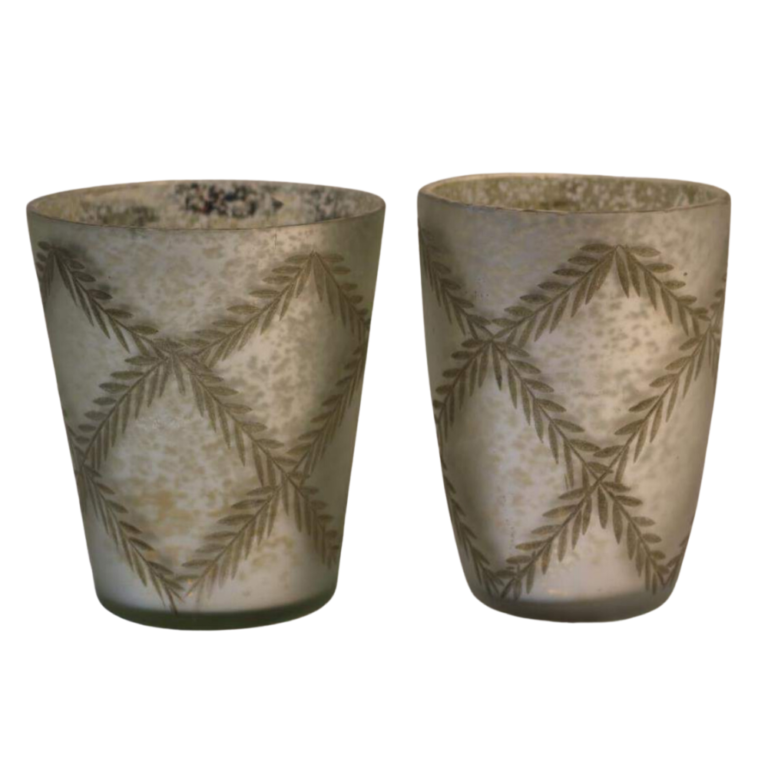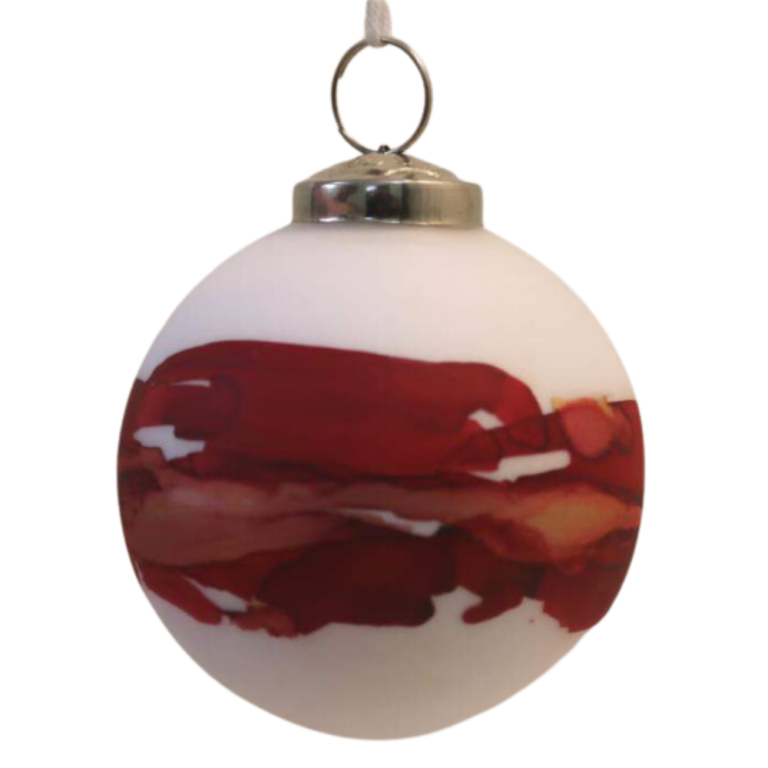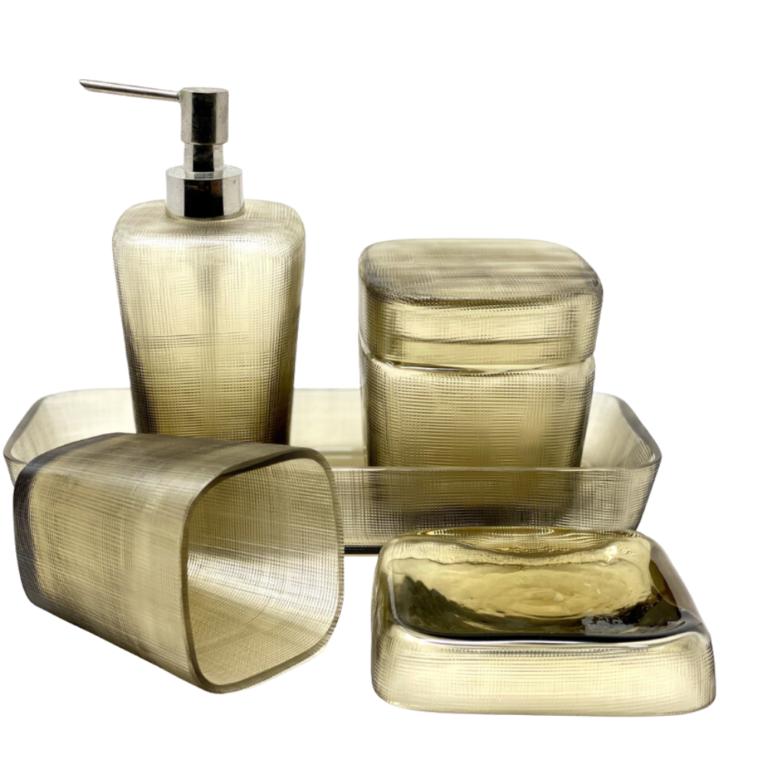Sourcing Glass Products from India: An Overview
India possesses a profound cultural legacy in the art of glassmaking. Skilled artisans create extraordinary handcrafted glass artefacts in India and these unique creations can captivate customers and elevate your product line as a brand owner or Amazon FBA seller.
The Indian glass sector offers a diverse array of products, ranging from decorative glassware and tableware to exquisite art glass and stunning stained glass creations. This industry plays a significant role in the Indian economy, with a substantial demand for Indian glass products across the globe.
With their versatility, these exquisite pieces can enhance various settings, including homes, offices, hotels, and restaurants, infusing any space with an elegant and artistic ambiance.
Sourcing glass products from India guarantees customers a truly unique and distinctive artefact. The intricate variations in color, texture, and pattern ensure that no two pieces are ever identical. With each artisan infusing their expertise and personal touch into the creation, the resulting glass artefacts possess their own distinct identity. This exclusivity appeals to customers seeking one-of-a-kind treasures to adorn their homes or gift to loved ones.
Sourcing glass products from India also offers importers a competitive advantage in terms of pricing. The country’s skilled artisans and cost-effective manufacturing processes make it possible to obtain high-quality glass artefacts at attractive price points.
This affordability allows FBA sellers to provide their customers with exceptional value for money, further enhancing the appeal of these exquisite creations.
Firozabad: The glass capital of India
Firozabad, located in Uttar Pradesh, India, is renowned for its glass industry. Glass products from this city are made using a combination of manual craftsmanship and semi-automated processes.
The city has a rich tradition of glassmaking, and many of the production techniques have been passed down through generations. However, the industry is also evolving and adopting more advanced technologies and machinery to improve efficiency and quality.
Manufacturers here are exporting to numerous countries such as the USA, Europe, China, Australia, and across Asia. Additionally, the domestic market has been growing steadily.
Importers can find glassware in a wide price range, starting from US$ 0.16 and going up to US$ 98.
How glass products are made in Firozabad
There are 2 ways that glass items are made in Firozabad.
1) The first is mouth blowing, which involves skilled artisans shaping molten glass using their breath and specialized tools. This technique, combined with a percentage of pressed glass, results in exquisite drinkware, serve ware, decorative items, and utility products.
This is the process in general:
- Gathering and melting: The manufacturing process begins with the collection of raw materials. Silica sand, soda ash, limestone, and other additives are mixed together in precise proportions to create a batch of glass. This batch is then melted in large furnaces at high temperatures, typically exceeding 1,500 degrees Celsius.
- Glass formation: Once the glass has melted and reached the desired consistency, it is gathered on the end of a blowpipe or a glass tube by skilled glassblowers. The glassblower blows air through the pipe, creating a hollow bubble of molten glass.
- Shaping and decoration: The glassblower then shapes the molten glass by blowing, rolling, and manipulating it with various tools. They can create different shapes, such as bottles, vases, bowls, or figurines. During this stage, glass artisans may also add decorative elements like colored glass, patterns, or intricate designs using techniques like glass cutting, etching, or glass painting.
- Annealing: After the desired shape and design are achieved, the glass product goes through a process called annealing. It involves carefully cooling the glass at a controlled rate in a temperature-controlled kiln. This gradual cooling relieves internal stresses within the glass, making it more durable and less likely to break.
- Finishing and quality control: Once the glass product has been annealed and cooled, it undergoes final finishing touches. This may involve removing any rough edges, polishing the surface, or adding additional decorative elements.
- Packaging and distribution: The finished glass products are then packaged for transportation and distribution. They are typically wrapped in protective materials to prevent damage during shipping.
2) The second process is using a mold. This process, known as glass molding or glass pressing, involves shaping the molten glass by pressing it into a pre-formed mold.
Here’s a general overview of the glass molding process:
- Mold preparation: The first step is to create or obtain the molds. These are typically made of cast iron or other heat-resistant materials. They are designed to have the desired shape and pattern for the glass product being produced. The molds can be reusable or disposable, depending on the complexity of the design and the expected production volume.
- Preheating: Before the glass can be molded, the molds need to be preheated. This is done to ensure that the molten glass does not cool too quickly and stick to the mold surfaces. The molds are placed in a preheating furnace and heated to a specific temperature.
- Gathering and melting: Similar to the traditional glassmaking process, the raw materials for glass production are gathered and melted in a furnace. The molten glass is maintained at a specific temperature suitable for molding.
- Glass molding: Once the glass has reached the proper temperature, a glassblower or a machine operator gathers a suitable amount of molten glass using a ladle or a similar tool. The molten glass is poured into the preheated mold.
- Mold closure and pressing: The mold is closed, either manually or using a mechanical press, applying pressure to the molten glass. The pressure helps to shape the glass according to the contours of the mold, capturing the desired design and details. The glass is pressed for a specific duration to ensure proper forming.
- Cooling and release: After the glass has been pressed and molded, the mold is opened, and the glass product is allowed to cool and solidify within the mold. The cooling time depends on the size and thickness of the glass product.
- Finishing and quality control: Once the glass product has cooled, it is removed from the mold. Any excess glass or rough edges are trimmed or polished to achieve the desired final appearance. Quality control checks are conducted to ensure that the glass product meets the required specifications and standards.
- Packaging and distribution: The finished glass products are then packaged for shipping and distribution, often using protective materials to prevent damage during transit.
Glass molding allows for the production of consistent and precise glass products with intricate designs. It is a popular method in Firozabad due to its efficiency and the ability to create large quantities of glassware in a relatively short time.
Indian glass manufacturers vetted by India Sourcing Network
S.Gopal Overseas is a renowned manufacturer of blown glass, boasting an impressive in-house facility that employs more than 300 skilled craftsmen. The company has garnered a client base of over 450 esteemed buyers, including prominent names such as At Home, Cts, Tjx, Ptmd, Home Essential, Ab Home, Nakd, WM, TM, and 180.
Diversity is at the core of S.Gopal Overseas’ product range, which spans across various categories. From seasonal decor to kitchenware, hurricanes to drinkware, and candle holders and much more.
Operating from a sprawling factory area spanning 100,000 square feet, S.Gopal Overseas ensures that every stage of the production process iS executed within their own facilities. From manufacturing to finishing and packing, they maintain full control over the entire operation, guaranteeing the highest standards of quality and craftsmanship.
Their daily output showcases their efficiency and commitment to timely delivery. For instance, they can produce up to 1,000 vases, 10,000 ornaments, 5,000 units of drinkware and kitchenware, 3,000 candle holders, and an astounding 10,000 votives per day. This robust production capacity allows them to fulfill orders promptly and cater to large-scale requirements.
A.M. Glass International is a distinguished manufacturer of lead and cadmium free quartz glassware. The company is SEDEX certification and in compliance with the ROHS standard ensures the production of safe and environmentally friendly glassware.
The diverse product range offered by A.M. Glass International includes an exquisite collection of mouth blown and handcrafted glass items. From elegant vases to captivating table lamps, stylish lamp shades to tasteful table-top and bathroom accessories, their portfolio showcases a remarkable blend of artistry and functionality.
The company goes above and beyond by offering customization options, allowing customers to personalize their glassware. With the ability to create single layer, double layer, and even triple layer glass in an impressive selection of up to 140 color combinations, A.M. Glass International ensures that each piece is unique and tailored to individual preferences.
The company has established strong relationships with key buyers in the industry. Renowned brands such as Guaxs, Bison Home, Bombyxx, Ligne Roset, RH, and Lambert recognize the exceptional quality and craftsmanship of A.M. Glass International’s products, making them valued partners in the market.
Next steps to source suppliers from India
India Sourcing Network can manage the entire sourcing process for you in India. Our Done For You Sourcing services are designed to provide end-to-end solutions. Submit your sourcing request.











